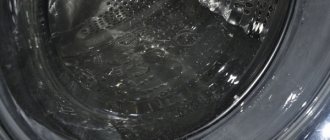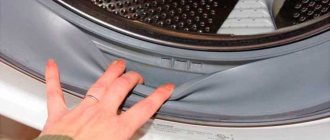Very often, housewives are faced with an unpleasant phenomenon - after washing, a viscose item shrinks. The favorite dress, which so beautifully emphasized the figure, became hopelessly small. Or the sleeves on my husband’s new sweater have become absurdly short. Or a children's suit, which was worn only a couple of times, became three sizes smaller. And this despite the fact that they bought for growth...
Let’s say right away - don’t rush to get upset! If a viscose dress shrinks after washing, there are at least 3 ways to return the product to its former appearance. By the way, in this article we will also tell you what to do if the item does not shrink after washing, but rather stretches. We assure you that our advice will definitely help you! For the future, here are the rules for washing viscose.
Is it possible to boil viscose?
The cellulose base, especially in low-quality viscose, is prone to pilling, while polyester fibers maintain a consistent smoothness. ... Materials made from cellulose fibers require delicate care, while polyester can be bleached, boiled, washed and dried without fear of damaging the product.
Interesting materials:
How to delete a folder if it is in use? How to delete a folder if it asks for administrator rights? How to delete a folder or file? How to delete a folder from the gallery on iPhone? How to delete a folder from the command line? How to remove a folder from program files? How to delete the Kaspersky Lab folder? How to delete a folder that is used by another program? How to delete a folder that requires permission? How to delete a folder on the desktop?
How to stretch a shrunken viscose item
It would not be amiss to remind you that it is easier to prevent any problem than to solve it. Therefore, check out how to wash things made of viscose.
Here is a short list of rules:
- Read the label carefully for washing and drying instructions;
- In the machine, things are washed in a cover;
- Do not wash viscose clothing in hot water. The permissible maximum is 35°;
- When washing by hand, do not squeeze, wrinkle or twist the material too much;
- This fabric is not wrung out in a washing machine. To get rid of moisture, shake the item, then wrap it in a terry towel so that the water transfers into it;
- You need to dry it horizontally so that the jacket does not stretch or stretch out from its own weight;
- Shirts, blouses and other similar clothes should not be dried on radiators.
In fact, there are many more nuances and rules, but these are the most important. If you did something wrong and your viscose shrunk after washing, check out what you need to do.
Wear when wet
It is known that when wet, viscose is most susceptible to deformation (more about this here). Your task is to adjust the product correctly - to your size.
To stretch a viscose dress that has shrunk after washing, do this:
- Wet the product with a spray bottle;
- Pull it over the owner;
- Pay special attention to the places that have shrunk more - sleeves, length along the back or front, etc.;
- Wear until completely dry.
In this way you can easily stretch a viscose dress in length or width - try it. Only for girls: how to wash a white bra.
Using an iron or steam steamer
To stretch viscose after washing, you will need an iron or vertical steamer:
- Turn the item inside out;
- It is advisable to iron through gauze;
- Set the temperature setting for ironing silk;
- Turn on the steam;
- Start ironing the item, gently stretching it in the desired directions;
- To achieve symmetry, work together: one strokes, the other pulls evenly with both hands.
Vertical drying on a soft hanger
- A dress that has shrunk after washing needs to be thoroughly wetted;
- Remove from water and shake lightly.
- Take soft, wide hangers and hang the product vertically;
- To increase the length of sleeves or skirts, hang a small weight with clothespins;
- After a couple of hours, the load is removed, the product is transferred to a horizontal surface and dried naturally.
Rules for drying viscose clothes
- Place washed items on wooden or plastic hangers to drain. You shouldn't take metal ones - they leave traces.
- You can lay out and smooth the product on a plane, so it will definitely not be deformed.
- A towel or folded sheet will help remove excess moisture. The blouse is placed on a towel and rolled up, pressing lightly. This way, deformation will be avoided.
- Heated dryers and washer dryers cannot be used. As well as drying wet things on radiators or the active sun. Exposure of viscose to high temperatures causes deformation and shrinkage.
- To dry, items with a high content of viscose fiber should be smoothed by hand on a flat surface.
How to iron viscose fabric
Iron any item of clothing or home textiles made from natural cellulose according to the following recommendations.
- The operation should be carried out exclusively from the wrong side.
- Turn the iron on low heat.
- Iron elements and decor on the front side through gauze.
- Do not use a steamer or topical humidification from a spray bottle. Hot steam causes clothes to stretch.
- If moisturizing is necessary, use damp gauze and iron through it.
Questions and answers
How to treat viscose so that it does not shrink when washed?
Typically, fabric that is planned to be used for sewing bed linen or clothing is subjected to anti-shrink treatment. All fabrics consisting of 50% viscose or more are processed. The material is wrapped in a damp sheet. After 3 hours, iron from the wrong side. Then be sure to cut off a few centimeters around the edges. The edges are less susceptible to shrinkage, and after processing, skew of the web may be observed.
Does viscose that stretches (with stretch, nylon, elastane ) shrink?
When it comes to raw fabric, the answer is yes. The addition of synthetic fibers reduces shrinkage, but does not completely eliminate it. The shrinkage of viscose with synthetics can be 1.5-2.5%.
Viscose has remarkable characteristics: it gives a pleasant tactile sensation, allows the body to breathe, and absorbs moisture. At the same time, it is durable, lightweight and inexpensive. The fabric has few disadvantages - a tendency to wrinkle and susceptibility to deformation when wet. As for shrinkage, this is rather a feature of the material. Typically, viscose is forced to shrink before the product is sewn. It does not shrink more if you follow the care recommendations: wash the item in lukewarm water, do not wring it out, dry it horizontally and iron it in the “silk” mode from the inside out.
How to dry and iron without harm
As well as washing, drying and ironing viscose is carried out according to the manufacturer's instructions on the label. This is the only way to ensure that deformation of the product is avoided.
If the label is lost, follow the general rules for caring for viscose:
- Items should be dried in a horizontal position to prevent the fabric from stretching. Horizontal drying can be used for small and light items. Soft hangers should be used. The rope and clothespins will leave creases in the fabric.
- Iron the fabric correctly from the inside out so that the iron does not leave shiny marks. For ironing on the front side, use special paper or dry cotton cloth.
- Iron mode – “synthetic” or “silk”.
- Recommended ironing temperature is up to 130 degrees.
- Viscose should not be steamed or ironed while wet, otherwise it may stretch out.
We recommend: Is it possible to wash children's clothes, silk, and wool with Calgon?
The main disadvantage of viscose is that it wrinkles a lot. You have to iron it for a long time and carefully, since you cannot increase the ironing temperature and moisten the fabric. Therefore, they try to buy viscose fabrics not in pure form, but in a mixture with artificial fibers, which reduce the tendency to wrinkle. This fabric does not need to be ironed if it is stored flat.
How to wash viscose correctly?
This is the first stage on the path to a “long and happy” life for viscose clothing. Before throwing such an item into a washing machine or a bowl of powder and hot water, you should carefully study the information on the label and follow it, choosing the washing mode, ironing, and drying conditions (this is especially important for blended viscose).
Now we need to sort into white and colored items. Ideally, viscose does not fade, but for washing white clothes, products specifically for white are preferred, and they contain optical brighteners that can ruin the brightness of colored items.
The following are the usual steps:
- You need to check your pockets for contents;
- fasten all zippers or buttons;
- turn the clothes inside out.
To prevent viscose items from shrinking during washing, the water temperature should not exceed 30 degrees. One should also take into account the fact that viscose is easily deformed when wet, therefore a centrifuge and active manual spinning are contraindicated for it, as well as strong friction. Accordingly, for machine washing you need to choose a delicate mode without spinning; for hand washing, you need to avoid any mechanical influences.
Advice
Never throw special balls (or tennis balls) into the drum of the washing machine to better remove dirt. Firstly, viscose generally does not become as dirty as, for example, cotton. And secondly, such “terror” will inevitably spoil the thing: it will stretch, become covered with ugly puffs, and this is irreversible. Even if the product was in a bag.
What else is important to know when washing viscose?
- A concentrated alkali solution in the detergent is detrimental to this matter.
- For machine washing, items must be placed in special protective bags.
- They should be placed in the machine with fabrics of a similar texture: coarse fibers from other clothes can leave puffs on the surface of viscose items.
- Hand washing comes down to half an hour of soaking and light “massaging” hand movements.
- The choice of detergent plays an important role.
This is worth mentioning separately. You can wash viscose with powders for gentle washing of delicate fabrics. But it is better to prefer liquid detergents; they have a clear advantage in this matter:
- they are gentle on the fibers, providing more gentle care;
- always completely dissolve in water, which means that no grains will remain on the surface of the product after washing;
- are easily washed off when rinsing, leaving no white streaks.
Advice
If you are allergic or there is someone in the house who can harm you (children, animals), also choose liquid powder for washing viscose products. It does not create dust (which means it will not get on food if the washing machine is in the kitchen, or into the respiratory tract, causing allergies). This detergent does not contain too aggressive substances, which also often cause an undesirable reaction in the body; it will not crumble or get wet if it accidentally falls into the “wrong hands” (or paws).
Preparation before washing
If the item is not very dirty, there are no stains on it, then a regular rinse in cool water will help add freshness. You can soak for half an hour, then gently squeeze and dry. But this rarely happens; a full wash with previous preparation is often required.
What you need to do first:
- Sort things out. We remove white from color. Viscose may fade if low quality dyes are used.
- Turn out the pockets. Checking the seams. If there is a lot of debris or threads in them, you need to clean them with a brush.
- Fasten locks, buttons, snaps so that they do not deform the product when washed.
- If clothes have heavy brooches, buttons or other decorative elements, it is better to rip them off and unfasten them. Otherwise, wet viscose will stretch even more due to weight.
- Before washing, clothes should be turned inside out.
Washing Tips
- Viscose fabrics are sensitive to direct contact with chemicals and homemade stain removers such as vinegar, ammonia, and baking soda.
- Viscose knitwear is recommended to be washed in soft water. A few drops of ammonia, which is thoroughly mixed beforehand, will help soften it additionally.
- Water with the addition of a spoonful of vinegar can refresh the color and make the fabric smoother.
- White viscose items do not fade, but are prone to staining from sunlight. This is another argument not to dry clothes in the sun. If stains have already appeared, hydrogen peroxide or oxygen bleach containing sodium hypochlorite will help remove them.
- There is no need to remove stains on viscose fabric with soap and vigorous rubbing. This deteriorates the fiber structure.
- Choose detergents that do not contain alkali or chlorine, which destroy viscose.
Let's act tougher
If following the simplest tips you cannot save a viscose item, you will have to resort to “improved” methods. Experienced housewives advise not to get upset, but to adopt backup options.
A solution of soda, table vinegar, a hair dryer, or a weight suspended from the hem can help return the shape of a shrunken viscose item.
You can try to return the product to its original appearance.
- Prepare a solution of soda (in proportions of 1 tsp per glass of water), moisten a piece of gauze in it. Then you should put a gauze cloth on your clothes and run an iron over it with a steam generator setting.
- Moisten the item in clean water, then treat it with a similar soda solution. Next, you need to roll a viscose blouse or dress into a tube and carefully pull its edges. Then the thing unfolds and twists again, but in the opposite direction. The stretching procedure is repeated. At the end of the manipulations, the product should be rinsed and dried.
- Take a cotton sheet and wet it with a soda solution (one teaspoon of soda per 300 ml of water). The sheet is placed on a horizontal surface and straightened out. The shrunken viscose item should be placed on the canvas and covered with the free edge of the sheet. Wait two hours, then rinse the clothes and dry them.
- Stretch the completely dampened viscose sweater over the back of a chair, box, and dry with a hairdryer.
- Use a weight. This method is suitable when the item has decreased in length. If the hem is shortened, the bottom of the underwear is “grabbed” with an elastic band, where a light weight (400 grams) is then hung. Similar actions can be performed with shrunken sleeves or shorter trousers. In this position, the item can hang for a maximum of an hour, otherwise the bottom will stretch too much and be uneven.
- Moisten the viscose with a vinegar solution (100 ml of vinegar and half a liter of water). The item should be stretched out on a hard surface and secured on four sides with heavy objects. After 30 minutes, you need to rinse the product.
If you don’t want to “tinker” with a shrunken item, it is better to take the item to a trusted dry cleaner. Competent specialists can stretch clothes to the desired size, while maintaining their shape and brightness.
What to do if the item does not shrink, but stretches?
We told you how to stretch viscose that has shrunk after washing. Now let’s briefly discuss the opposite version of the problem - what to do if the product, on the contrary, has increased in size and is unsightly deformed. Let’s say right away that in this case it is much more difficult to restore the dress’s former appearance. The material very quickly takes on new shapes, and therefore it will be very difficult to compress it in the right places.
We will tell you what to do if the viscose has stretched after washing, but, alas, we emphasize that you should not expect 100% results:
- If the fabric contains polyester, acrylic or wool, soak the item in hot water - about 60°. Dry horizontally on a towel, correctly positioned and straightening the folds well;
- If you have 100% viscose, or have added silk, elastane, or linen, repeat the previous instructions, but the water for soaking should, on the contrary, be ice-cold;
- Hang the item to dry on the radiator. Exposure to heat will almost certainly cause shrinkage.
Don't be afraid to buy expensive items made from viscose fabric - just be prepared for proper care. Well, keep our article bookmarked. If suddenly after washing your viscose item shrinks, feel free to use our life hacks. Next, we’ll explain how to properly clean a drape coat for autumn)
Does viscose shrink?
Viscose is a controversial fabric. The controversy concerns not only the tendency to shrink, but also the origin of the fabric. Some classify it as artificial fabric, while others classify it as natural.
In fact, viscose is an artificial fabric obtained from the natural raw material cellulose. Recall that cellulose is also used to make paper. To make fabric from it, a solution is obtained by xanthogenation, which is passed through a spinneret plate into an acid bath. The resulting viscose threads are dyed, dried and sent to textile production. Various types of fabrics are made from viscose fiber - oil, staple, lining and others.
If we talk about 100% viscose in rolls, then without special treatment it shrinks on the order of 3-4%. When mixed with wool, shrinkage can reach 6-7%.
After treatment, the fabric becomes quite resistant to deformation. Clothes and bedding made of viscose, as it should be, do not shrink after washing.
What is anti-shrink treatment?
They try to prevent deformation of fabrics at the stage before sewing the product.
The essence of anti-shrink treatment comes down to artificial shrinkage of viscose fabric.
Different methods are used:
- Mechanical. The fabric is pulled through hot rollers with an elastic band pressed tightly.
- Chemical. It involves impregnating the fibers with a solution of formaldehyde, which reduces sensitivity to moisture.
- Tracking. Mainly used for knitwear. Viscose knitwear is left for a long time in a room with a given humidity. As a result, it shrinks significantly and subsequently retains its shape better.
How to prepare things for washing
- Start by studying the label, which indicates the temperature and washing method. For different products, care requirements may vary depending on the composition and type of fibers.
- Wash items strictly by type: light, black and colored.
- When machine washing, use a mesh bag in which the material will not rub against the walls of the drum. It will protect the fabric from snagging and pilling.
- Hooks, zippers and buttons on clothing should be fastened to avoid damaging delicate fibers.
- Wash all viscose items inside out.
- If heavily soiled, clothes should be pre-soaked. Dilute the powder or liquid preparation in a bowl of warm water (30-35°). Place the clothes there for 30-40 minutes. After this, squeeze lightly and start washing.
Subtleties of hand washing
Washing viscose by hand is not difficult at all if you follow the recommendations.
You should start with soaking. Prepare water t=30-35° with washing or suitable detergent. Hot water negatively affects the structure of the fabric and it shrinks. Immerse the items in the soapy solution, then gently wrinkle and iron the fabric. Avoid rough impact, do not rub, twist or squeeze into a ball. Wet viscose fibers are very fragile and vulnerable. They are highly prone to deformation. Shaking will help remove excess water.











